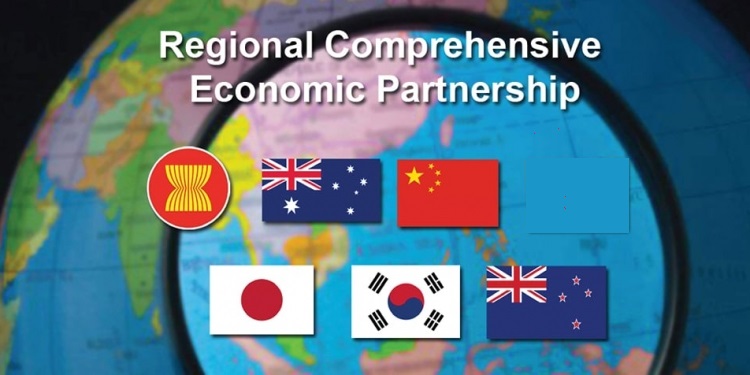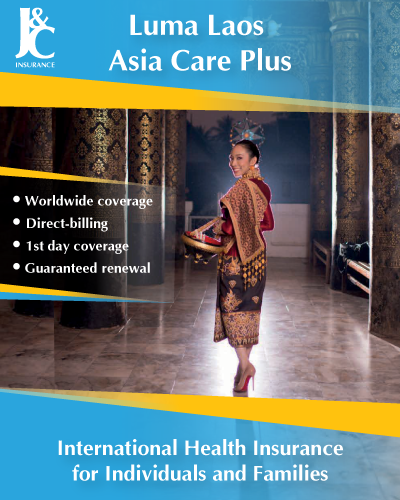Laos, Asia-Pacific Sign World’s Biggest Trade Deal
After eight years of negotiations, Asia-Pacific nations finally signed the world’s biggest free-trade agreement on Sunday at a virtual summit hosted in Hanoi, Vietnamese Prime Minister Nguyen Xuan Phuc said on Sunday.
“I am very pleased that, after eight years of negotiations full of difficulties, today we end negotiations on the Regional Comprehensive Economic Partnership (RCEP) and officially sign it during the 37th ASEAN Summit,” Phuc said at an ASEAN summit on Sunday.
The Regional Comprehensive Economic Partnership, or RCEP, covers 2.2 billion people and 29% of global economic output.
The world’s biggest trade agreement includes 10 ASEAN member states — Vietnam, Thailand, the Philippines, Laos, Cambodia, Myanmar, Malaysia, Singapore, Indonesia and Brunei — along with Australia, China, Japan, New Zealand, and South Korea.
“Since the beginning of 2020, the coronavirus pandemic has spread to more than 200 countries and territories, igniting challenges in socio-economic and political environments and reducing the mobility of trade and investment flows globally,” Phuc said at an ASEAN summit on Sunday.
“Since the beginning of this year, we have witnessed efforts by various parties in resolving existing issues in negotiations.” Phuc added.
Once in place, RCEP will reduce tariffs, set common trade rules and facilitate supply chains. The trade agreement will cover everything from trade, services, investment, e-commerce, telecommunications and copyright.
Jeffrey Wilson, Research Director at the Australian Strategic Policy Institute, said on Twitter on Sunday that RCEP will fundamentally remake the economic, strategic and institutional architectures of the Indo-Pacific, which will prove vital in recovering from the coronavirus pandemic.
“By providing a single set of economic rules,” he wrote, “its 15 members will prioritize integration amongst themselves. It will also change the calculus of many governments towards U.S.-China decoupling.”
Vietnamese Prime Minister Phuc also said in his speech on Sunday that the signing of RCEP in Hanoi sends “a strong message affirming ASEAN’s leading role in supporting multilateral trading systems.”
The Australian government, meanwhile, will use the trade pact as an opportunity to strengthen relations with China, which have been tense recently, and will meet with Chinese ministers once in-person meetings resume next year, the Sun-Herald newspaper reported on Sunday before the signing.
“It’s a hugely symbolically significant agreement, coming at a time of global trade uncertainty,” Trade Minister Simon Birmingham told the Sun-Herald.
“It is crucial that partners like China, as they enter into new agreements like this, deliver not only on the detail of such agreements, but act true to the spirit of them,” he said.
Relations between China and Australia have become increasingly strained this year, after Canberra supported U.S. calls for an investigation into the origins of the coronavirus pandemic.
Previously, the agreement hinged on India, yet New Delhi remained reluctant to open up Indian markets as much as the deal proposed. Once India withdrew from negotiations at the end of 2019, the path forward for the trade agreement cleared.
ASEAN leaders have said they still intend to expand trade with India despite the country leaving RCEP.
Before finalizing the agreement, 31 rounds of negotiations and 18 ministerial meetings took place over an eight-year period since 2012. Self-imposed deadlines for the deal were missed on six occasions.
WHAT IS RCEP ALL ABOUT?
RCEP includes China, Japan, South Korea, Australia, New Zealand and the 10 members of the Association of South East Asian Nations (ASEAN) – Brunei, Vietnam, Laos, Cambodia, Thailand, Myanmar, Malaysia, Singapore, Indonesia and the Philippines.
India was involved in earlier discussions but opted out last year.
One of the deal’s biggest draws is that its members already have various bilateral or multilateral agreements in place, so RCEP builds on those foundations.
It will allow for one set of rules of origin to qualify for tariffs reduction with other RCEP members. A common set of regulations mean less procedures and easier movement of goods.
This encourages multinational firms to invest more in the region, including building supply chains and distribution hubs.

Say goodbye to sugar and calories, and hello to fresh sparkling hydration at home or on-the-go !
WHAT IS ITS GEOPOLITICAL SIGNIFICANCE?
The idea of RCEP was hatched in 2012 and was seen as a way for China, the region’s biggest importer and exporter, to counter growing U.S. influence in the Asia-Pacific under Obama.
Negotiations for a U.S.-led “mega-regional accord” then known as the Trans-Pacific Partnership (TPP) – Obama’s signature trade deal – were making strong progress and China was not among its 12 members.
Momentum behind RCEP grew when Trump withdrew the United States from the TPP in 2017, taking away its main architect and two-thirds of the bloc’s combined $27 trillion GDP. It was renamed the Comprehensive and Progressive Agreement for Trans-Pacific Partnership (CPTPP) and it includes seven RCEP members.
As the key source of imports and main export destination for most RCEP members, China stands to benefit and is well positioned to shape the trade rules and expand its influence in the Asia-Pacific, which Obama had openly sought to prevent.
HOW IS RCEP DIFFERENT TO CPTPP?
RCEP focuses heavily on slashing tariffs and increasing market access but it does not harmonise to the same extent as CPTPP and is seen as less comprehensive.
It requires fewer political or economic concessions compared with CPTPP and RCEP has less emphasis on labour rights, environmental and intellectual property protections and dispute resolution mechanisms, although it does include provisions on competition.
RCEP’s market size is nearly five times greater than that of the CPTPP, with almost double its annual trade value and combined GDP.
WILL A BIDEN PRESIDENCY CHANGE ANYTHING?
Biden is signalling a swing back to the multilateral approach of the Obama administration, but it might be premature to talk about trade deals given the huge challenges awaiting him on the domestic front, and risk of upsetting unions that helped get him elected.
His trade priorities are expected to focus on working with allies to jointly exert pressure on China over trade and to push for changes at the World Trade Organization. Rejoining the CPTPP in its current form might not be on the horizon soon.
The trade unions and progressives that backed Biden’s election have previously been sceptical about free trade agreements. He has included elements of those in his transition team and may be advised to maintain protections on vulnerable industries like steel and aluminium.
However, indications of Biden’s intent to reconnect in the Asia-Pacific would be broadly welcomed, including as a counterbalance against China.



